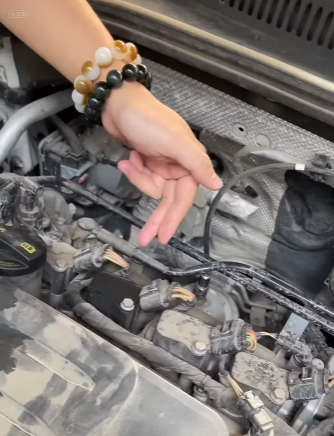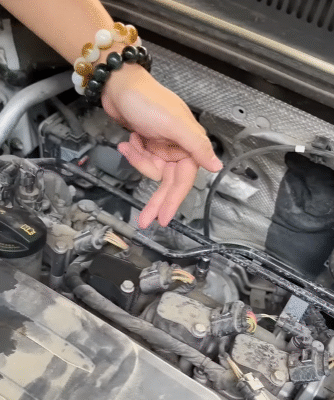
One of the most dreaded sights for any car owner is the illumination of the check engine light on the dashboard. This small, usually amber-colored light might seem insignificant at first, but it can indicate anything from a loose gas cap to serious engine problems. If your check engine light just came on, it’s important to understand what it means, what might be causing it, and what steps you should take next.
What Does the Check Engine Light Mean?
The check engine light is part of your vehicle’s onboard diagnostics system (OBD-II). When the car’s computer detects something unusual in the engine or emissions system, it triggers the light. While the light itself doesn’t tell you exactly what’s wrong, it does tell you that a diagnostic trouble code (DTC) has been logged.
Modern vehicles have sensors and electronic control units monitoring all aspects of engine performance. If a component starts to work outside of its expected range, the computer will store a code and trigger the light.
There are generally two types of check engine light warnings:
- Steady Light – Indicates a non-urgent problem, but it should be checked soon.
- Flashing Light – Signifies a more serious problem, often involving misfiring that could damage the catalytic converter. Immediate attention is required.

Common Reasons the Check Engine Light Comes On
While the cause of the check engine light can vary widely, here are the most common reasons:
1. Loose or Damaged Gas Cap
This is perhaps the simplest issue. A loose or cracked gas cap can cause fuel vapors to leak and reduce fuel pressure, which triggers the light. Before you panic, try tightening your gas cap or replacing it if it looks worn.
2. Faulty Oxygen Sensor
Your vehicle has one or more oxygen sensors that monitor the air-to-fuel ratio in the engine. A malfunctioning sensor can cause the engine to run inefficiently and increase emissions.
3. Bad Catalytic Converter
The catalytic converter reduces harmful emissions by converting gases like carbon monoxide into less harmful substances. If it fails, your car’s performance may drop, fuel efficiency will decrease, and emissions will increase.
4. Malfunctioning Spark Plugs or Wires
Spark plugs ignite the fuel-air mixture in the cylinders. Worn-out spark plugs or bad wires can lead to poor performance, misfires, and higher fuel consumption.
5. Faulty Mass Air Flow Sensor
This sensor measures the amount of air entering the engine and helps the computer regulate fuel injection. If it malfunctions, your car may hesitate, stall, or have trouble starting.
6. Problems with the EGR Valve
The Exhaust Gas Recirculation (EGR) valve reduces nitrogen oxide emissions by recirculating a portion of the exhaust gases back into the engine. If it’s stuck or clogged, it can cause engine knocking and reduce performance.
7. Issues with the EVAP System
The EVAP (Evaporative Emission Control) system traps fuel vapors and prevents them from escaping into the air. A leak or faulty part in this system can also trigger the check engine light.
8. Battery or Charging System Problems
Though less common, issues with your car’s battery, alternator, or electrical system might be behind the warning light, especially in modern vehicles with sensitive electronics.

What Should You Do When the Light Comes On?
Here are steps to take if your check engine light turns on:
Step 1: Check the Gas Cap
This is your first and easiest step. Make sure it’s screwed on tightly. If it was loose, the light might go off after driving for a few trips.
Step 2: Observe the Light’s Behavior
Is it flashing or steady? A flashing light suggests a severe issue — such as engine misfire — that needs immediate attention. A steady light means the problem is less urgent but still needs diagnosis.
Step 3: Monitor the Car’s Performance
Pay attention to how your vehicle is behaving. Are you noticing strange sounds, poor acceleration, or rough idling? These symptoms can help a technician pinpoint the problem more easily.
Step 4: Use an OBD-II Scanner
Many auto parts stores offer free scanning services. Plugging in an OBD-II scanner will reveal the trouble codes that your car’s computer has stored. While these codes don’t give a full diagnosis, they’re a great starting point.
Step 5: Visit a Mechanic
If you’re unsure of what the codes mean or how serious the problem is, it’s best to consult a certified mechanic. They can perform a thorough diagnostic and guide you on the necessary repairs.

Can You Drive with the Check Engine Light On?
It depends. If the light is steady and the car seems to be driving normally, you might be okay to drive for a short time. However, it’s best to address the issue sooner rather than later to avoid potential damage or increased repair costs.
If the light is flashing or the vehicle feels unstable (shaking, reduced power, stalling), stop driving immediately and seek assistance. Ignoring a flashing check engine light can lead to expensive damage to critical engine parts, especially the catalytic converter.
Preventing Future Check Engine Light Issues
Here are some tips to help prevent this warning light from reappearing:
- Perform regular maintenance: Stick to the manufacturer’s service schedule for oil changes, air filter replacements, and tune-ups.
- Use high-quality fuel and parts: Poor-quality gas or aftermarket parts can cause engine issues.
- Keep your gas cap in good condition: Replace it if it’s cracked or the seal is worn out.
- Respond to issues early: Address small problems before they become major repairs.

Final Thoughts
The check engine light is a vital warning system designed to alert you when your car needs attention. While it might be tempting to ignore it, doing so could lead to more serious and costly repairs. In some cases, the fix is simple — like tightening the gas cap. In others, it could point to a significant engine or emissions issue. By staying informed, taking timely action, and maintaining your vehicle, you can ensure your car runs efficiently and avoid unnecessary stress when that little light appears on your dashboard.



